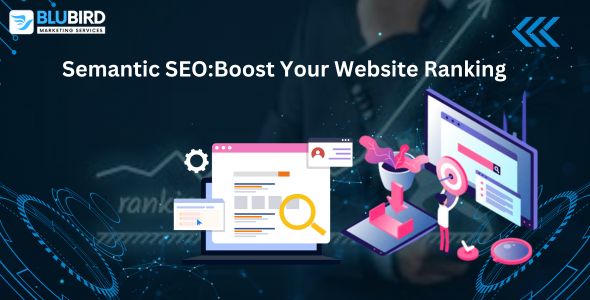With competition fiercely rising online, achieving top search engine results pages (SERPs) has become a complex challenge. Search engines like Google are constantly evolving, becoming increasingly sophisticated in understanding the intent and meaning behind user queries. This is where Semantic SEO comes into play. Semantic SEO is all about creating content that is relevant, valuable, and meaningful to your target audience. By doing so, you can improve your website’s visibility and attract more organic traffic. In this comprehensive guide, we will explore the ins and outs of Semantic SEO and how it can help boost your search rankings.
What is Semantic SEO?
Unlike traditional SEO, which focuses on optimizing for specific keywords, Semantic SEO delves deeper, aiming to understand the meaning and context behind user searches. It’s about creating content that caters to the user’s intent, answering their questions and providing them with the information they need in a comprehensive and engaging way.
Why is Semantic SEO Important?
Here are some key reasons why Semantic SEO is crucial for achieving top search engine rankings:
- Improved Search Engine Understanding: By focusing on the meaning and relationships between words, you can help search engines better understand your content and the topics you cover. This leads to higher relevance scores and improved search visibility.
- Enhanced User Experience: Semantic SEO emphasizes creating high-quality, in-depth content that addresses the user’s specific needs and interests. This results in a more satisfying user experience, leading to lower bounce rates and longer dwell times.
- Increased Organic Traffic: By targeting relevant keywords and topics, you can attract more qualified visitors to your website, ultimately boosting your organic traffic and leads.
- Stronger Brand Reputation: Semantic SEO helps establish your website as a trusted authority on specific topics. This builds brand awareness and credibility, ultimately leading to increased conversions and sales.
Essential Semantic SEO Tools:
Keyword Research: Tools like Ahrefs, SEMrush, and Moz can help you identify relevant keywords and topics, including long-tail keywords and LSI keywords.
Content Optimization: Tools like Yoast SEO and SEMrush can analyze your content and suggest improvements for better semantic optimization.
Topic Modeling: Tools like Latent Dirichlet Allocation (LDA) can help you discover hidden topics and relationships within your content, allowing you to create more comprehensive and informative pieces.
Schema Markup: Adding Schema markup to your content helps search engines understand the meaning and structure of your information, leading to higher ranking and improved rich snippets.
Crucial Google Semantic SEO Updates:
Let’s check out some of the most important Google updates for semantic SEO:-
Hummingbird (2013): “Hummingbird” is a significant algorithm change in Google Search that was introduced in 2013. It was announced on September 26, 2013. This update shifted the focus from keyword matching to understanding the meaning and intent behind user queries.
RankBrain (2015): RankBrain is a machine learning-based search engine algorithm introduced by Google in October 2015 as an extension to the 2013 Hummingbird algorithm update. This machine learning algorithm helps Google understand user behavior and search intent, further emphasizing the importance of semantic relevance.
BERT (2018): The Google BERT (Bidirectional Encoder Representations from Transformers) update, released in 2018, is considered the most significant change in search since Google launched RankBrain five years prior. This advanced language model allows Google to better understand the nuances of language, including context and relationships between words.
MUM (2021): The Google MUM (Multitask Unified Model) update was announced in May 2021 and is a new algorithm that aims to improve online search by using AI-powered technology to better understand language and search intent. This next-generation AI model aims to understand the full context of user searches, including images, videos, and text, further pushing the boundaries of semantic search.
Implementing Semantic SEO:
Here are some key strategies to put Semantic SEO into action:
- Conduct in-depth keyword research: Go beyond single keywords and focus on identifying related topics, long-tail keywords, and LSI keywords.
- Create comprehensive content: Develop high-quality, informative content that addresses the user’s needs and intent. This includes long-form content, blog posts, articles, and videos.
- Optimize your content: Use relevant keywords and synonyms, structure your content logically, and utilize internal linking to connect related topics.
- Build topic clusters: Create clusters of content around specific topics to demonstrate your expertise and authority.
- Utilize schema markup: Add schema markup to your content to help search engines understand its meaning and structure.
- Stay updated on Google’s updates: Continuously learn and adapt your SEO strategy to stay ahead of the latest Google algorithms and updates.
Conclusion:
By embracing Semantic SEO, you can create a winning strategy that delivers organic traffic, improves user experience, and ultimately propels your website to the top of search results. Remember, it’s not just about keywords anymore; it’s about understanding the user’s intent and providing them with the information they truly need.






